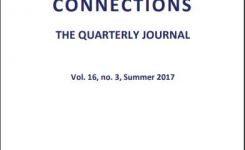- Partnership for Peace Consortium of Defense Aca...
- NATO’s Energy Security Policy Put to the Caspia...
NATO’s Energy Security Policy Put to the Caspian Test
0 comments
By Nathan R. Grison
As a bridge between the Middle East, the former Soviet republics, and the Euro-Atlantic zone, the Caspian Sea is increasingly at the center of the global geopolitical and commercial game. In addition to its strategic location, the Caspian Sea, according to analysts, could contain between 6 and 10 percent of the world’s gas reserves, and from 2 to 6 percent of the world’s oil reserves.
Defined in 1921 as an Irano-Soviet sea, the Caspian rapidly became a source of tension after the fall of the USSR. The increased number of littoral states, rising from two to five, made it necessary to redraw national sea borders and, maybe even more importantly, to redistribute the ownership of the resources lying under the Caspian seabed. As a regional agreement was never reached, each country has started granting permits for the extraction of hydrocarbons in what it considers to be its territorial waters. These conflicting claims recently led to a generalized and alarming military buildup across the region. As a result, in the past several years a number of armed incidents have been reported that have contributed to further destabilizing an already volatile region.
Moreover, this situation can have an impact on the energy security of NATO member states, and in particular those members of the European Union (EU), as they seek to diversify their sources of oil and gas supply. Their traditional hydrocarbon-exporting partners show signs of slowing down production, while consumption in the EU is expected to increase in the next decade. Some resource-rich countries could try to take advantage of this European dependency on their exports. In this regard, the 2006 gas crisis represented a wake-up call. With “fracking” developing rather slowly on this side of the Atlantic, Europe’s dependency on Russian hydrocarbons should be balanced with new sources of supply.1 As expressed in the 2010 Common Strategy and 2012 Chicago Declaration, energy security is on the Alliance’s agenda.
This article will argue that, although NATO has listed energy security as one of the main emerging security challenges the Alliance will face in the future, the example of the Caspian region highlights the difficulty for the Alliance in being active in the energy security domain, especially in a region where all the players are Partners or non-Partners and have their own security agenda. Moreover, translating the agreed language of the 2012 Strategic Concept into concrete actions is also difficult for the Alliance because the political will and the means of NATO member states necessary for the Alliance to become actively involved in this region are very limited. As a result, other international organizations, such as the EU and the Organization for Security and Cooperation in Europe (OSCE), have taken the lead in the area of energy security. The current militarization of the littoral states and the growing instability in the region, however, raise the question of the role NATO wants to play and where it could add value in the first place.


